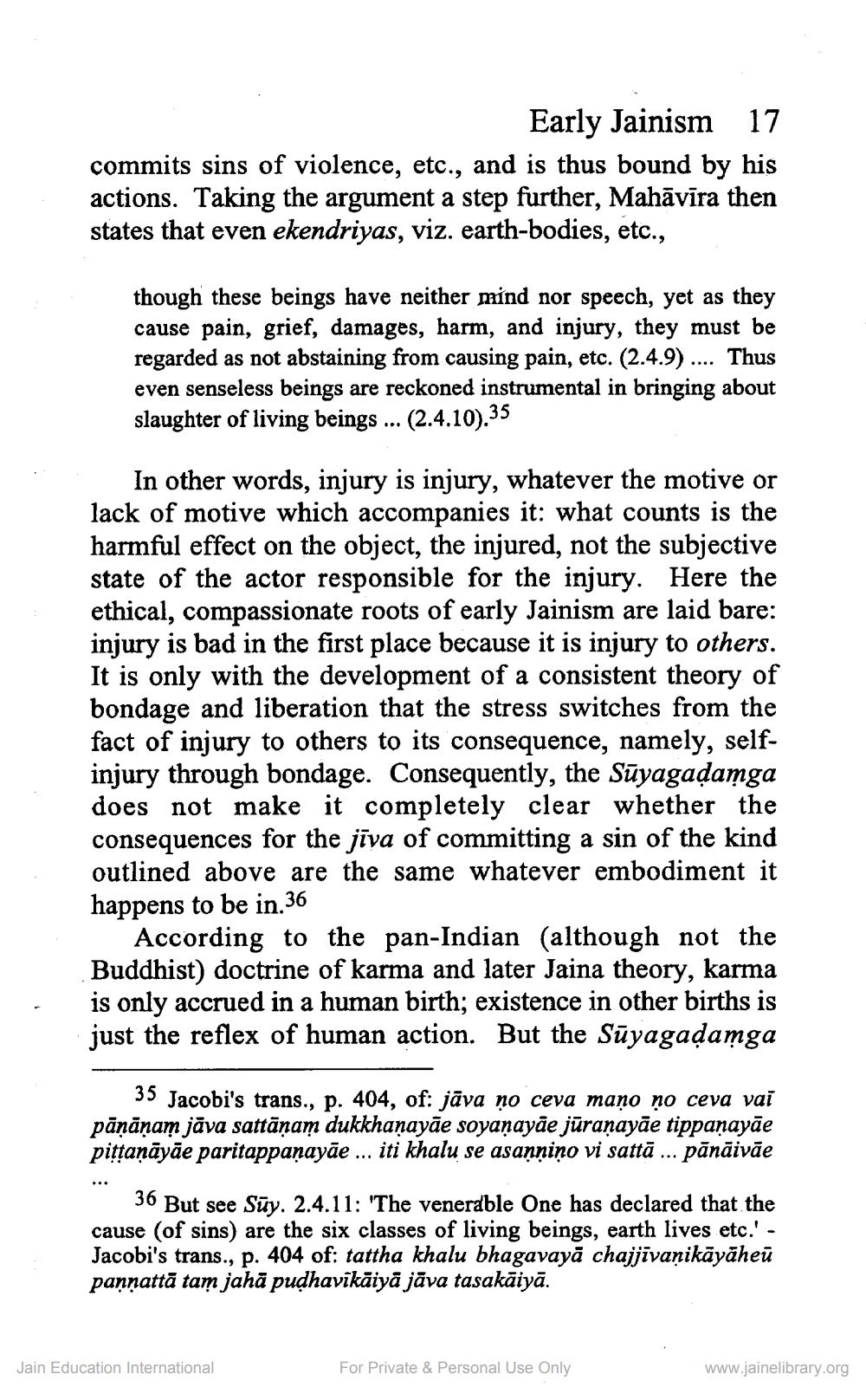________________
Early Jainism 17 commits sins of violence, etc., and is thus bound by his actions. Taking the argument a step further, Mahāvīra then states that even ekendriyas, viz. earth-bodies, etc.,
though these beings have neither mind nor speech, yet as they cause pain, grief, damages, harm, and injury, they must be regarded as not abstaining from causing pain, etc. (2.4.9) .... Thus even senseless beings are reckoned instrumental in bringing about slaughter of living beings ... (2.4.10).35
In other words, injury is injury, whatever the motive or lack of motive which accompanies it: what counts is the harmful effect on the object, the injured, not the subjective state of the actor responsible for the injury. Here the ethical, compassionate roots of early Jainism are laid bare: injury is bad in the first place because it is injury to others. It is only with the development of a consistent theory of bondage and liberation that the stress switches from the fact of injury to others to its consequence, namely, selfinjury through bondage. Consequently, the Sūyagadamga does not make it completely clear whether the consequences for the jīva of committing a sin of the kind outlined above are the same whatever embodiment it happens to be in.36
According to the pan-Indian (although not the Buddhist) doctrine of karma and later Jaina theory, karma is only accrued in a human birth; existence in other births is just the reflex of human action. But the Sūyagadamga
35 Jacobi's trans., p. 404, of: jāva no ceva mano ņo ceva vai pāņāņam jāva sattānam dukkhanayāe soyaņayāe jūraņayāe tippanayāe pittaņāyāe paritappaņayāe ... iti khalu se asanniņo vi sattā ... pānāivāe
36 But see Sūy. 2.4.11: 'The venerable One has declared that the cause (of sins) are the six classes of living beings, earth lives etc.' - Jacobi's trans., p. 404 of: tattha khalu bhagavayā chajjīvanikāyāheu pannattā tam jahā pudhavīkāiyā jāva tasakāiyā.
Jain Education International
For Private & Personal Use Only
www.jainelibrary.org




